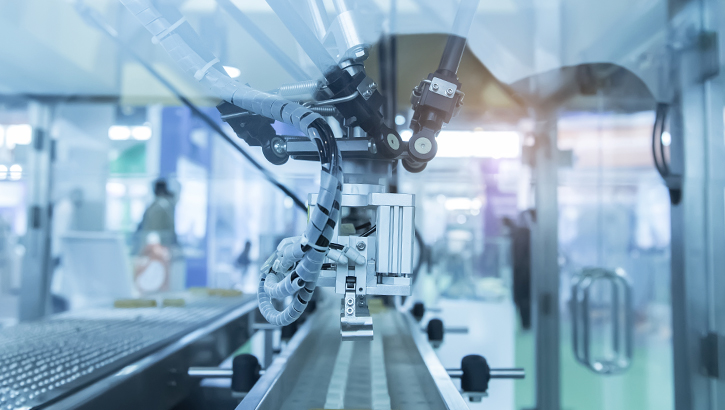Automation in the food industry has evolved rapidly in recent years, driven by the need to improve efficiency, ensure quality, reduce costs, and meet safety standards. Some of the most notable trends include:
1. Use of collaborative robots (cobots)
Cobots are designed to work safely alongside humans on production lines. They are used for repetitive tasks such as:
- Packaging
- Palletizing
- Food handling
They are more compact, economical and flexible than traditional robots.
2. Implementation of machine vision technologies
Machine vision systems allow real-time product inspection to ensure quality and detect defects. These technologies are used in:
- Fruit and vegetable grading
- Packaging inspection
- Verification of labels and barcodes
3. Digitalization and data analysis (Industry 4.0)
Process digitization, combined with data analysis, helps companies:
- Optimize production lines
- Predict equipment failures (predictive maintenance)
- Reduce food waste
It is achieved through the use of IoT (Internet of Things) sensors, MES (Manufacturing Execution Systems) software, and cloud-based analytics platforms.
4. Sustainable packaging automation
The demand for sustainable packaging has led to the automation of processes handling recyclable or biodegradable materials. Automated lines quickly adjust packaging designs to environmental requirements.
5. Advanced processing technologies
- HPP (High-Pressure Processing): Use of high pressure to extend the shelf life of fresh produce without the need for preservatives.
- Microwaves and ultrasound: Automated methods for fast and efficient cooking or pasteurization processes.
New trends in automation not only increase productivity but also meet consumer expectations for sustainability, security, and personalization.
6. Mass customization through artificial intelligence
Consumers are demanding personalized products. Automated factories are using AI to tailor production to individual preferences, such as gluten-free, vegan, or low-sugar products.
7. Autonomous systems in logistics and storage
- Automated guided vehicles (AGVs) for moving materials around plants.
- Automated warehouses with robotic picking systems.
- Software for inventory optimization.
8. Seguridad alimentaria mediante blockchain
The use of blockchain in combination with automation allows for tracking every stage of the production process, from raw materials to the final consumer. This ensures transparency and increases consumer trust.
9. Cleaning and disinfection automation (CIP and advanced systems)
Clean-in-place (CIP) systems are now more automated, reducing water and chemical consumption. New technologies such as ultraviolet light and ozone are also being integrated to disinfect surfaces.
10. Augmented reality and virtual reality
- Augmented reality: Remote assistance in equipment maintenance.
- Virtual reality: Employee training in a virtual environment before interacting with real machines.
Starting from specific specifications in each case, we carry out the design and comprehensive production of Complete Lines that cover the specific needs of each client. Tell us about your needs and we will carry out a personalized project that adapts to your requirements. If you wish, we can work together from the beginning of the activity, renew your equipment or adapt to your new needs. Together, we are stronger. Each Project is unique and personal. Our capacity and experience enable us to tackle any possible project within the Food sector.
